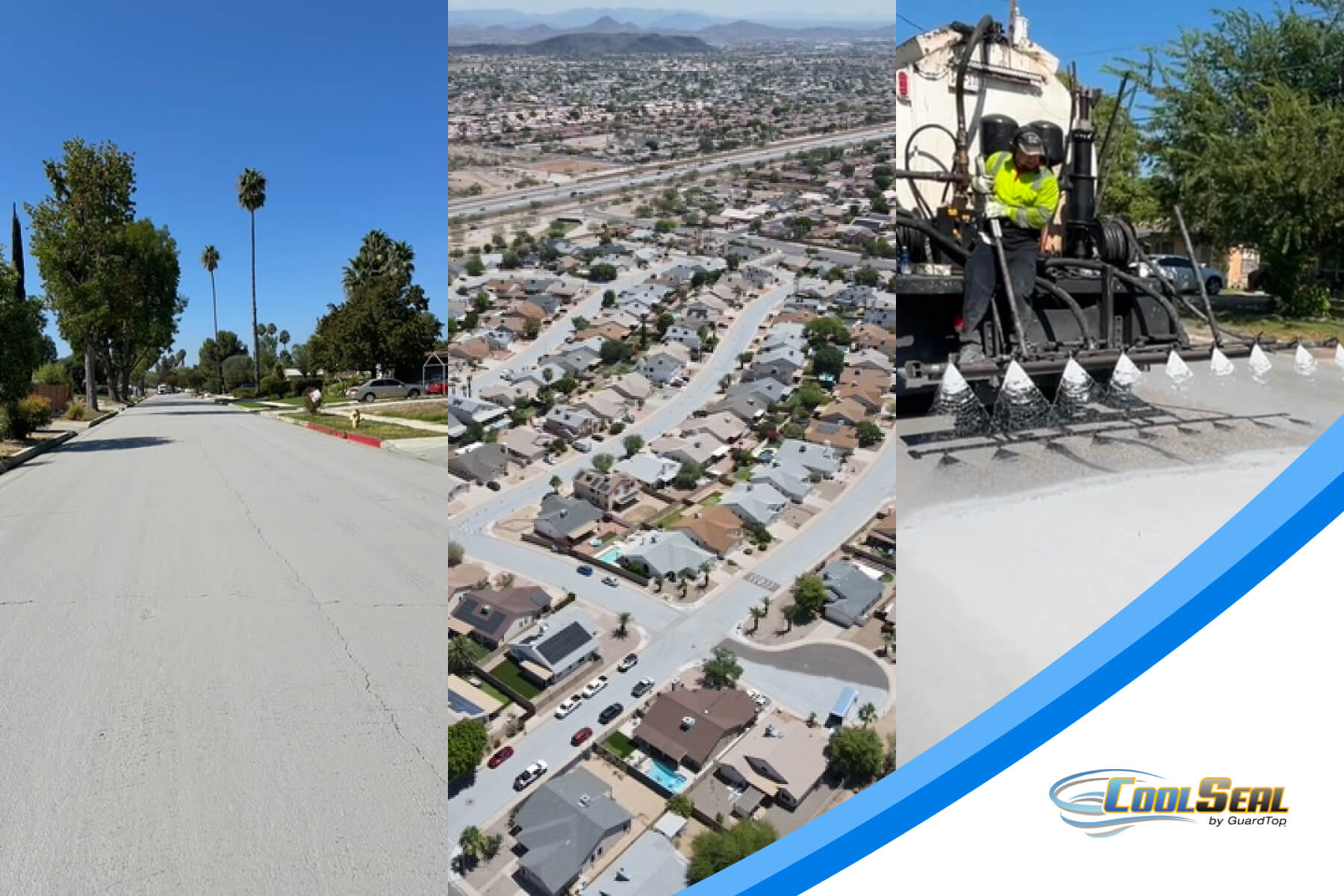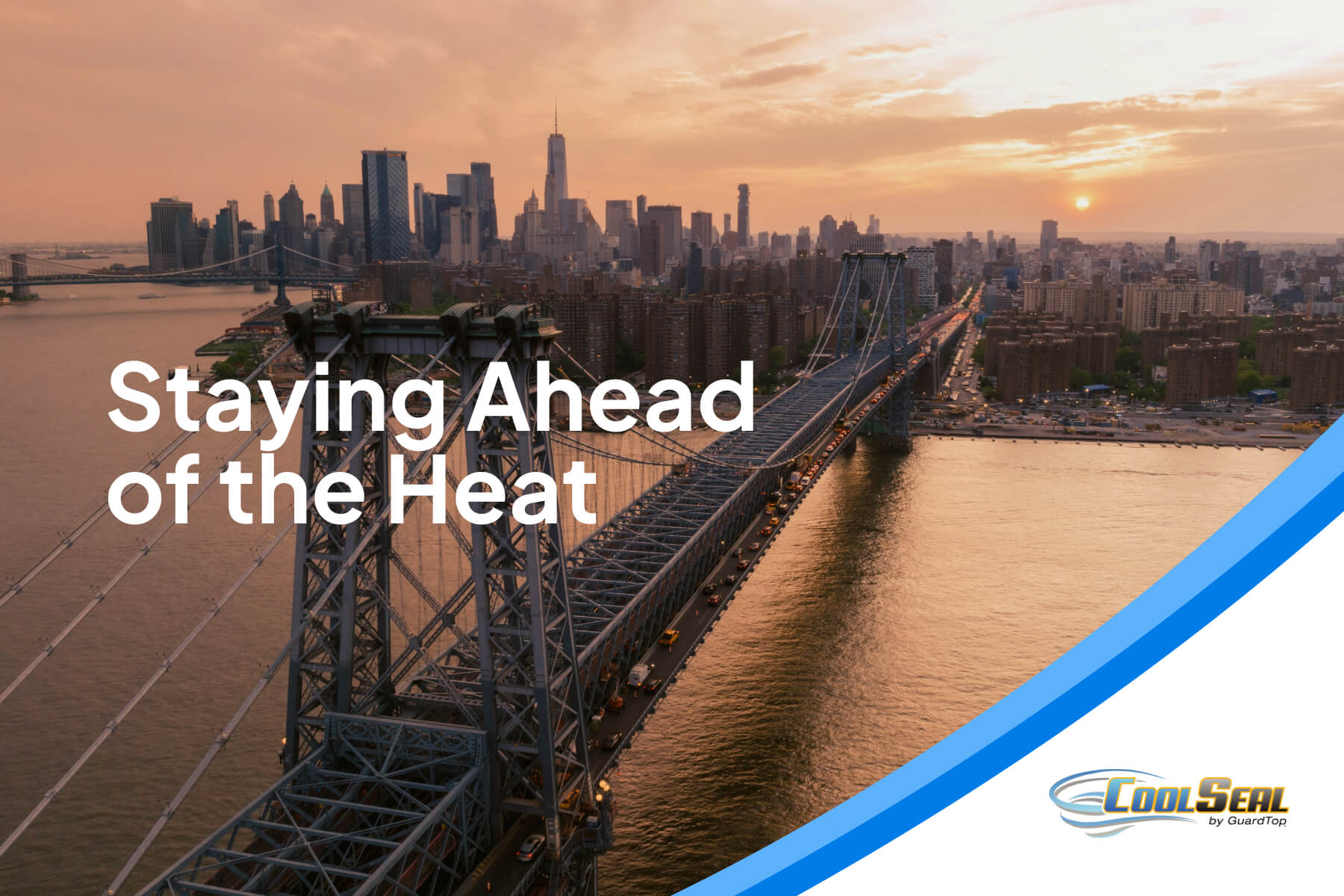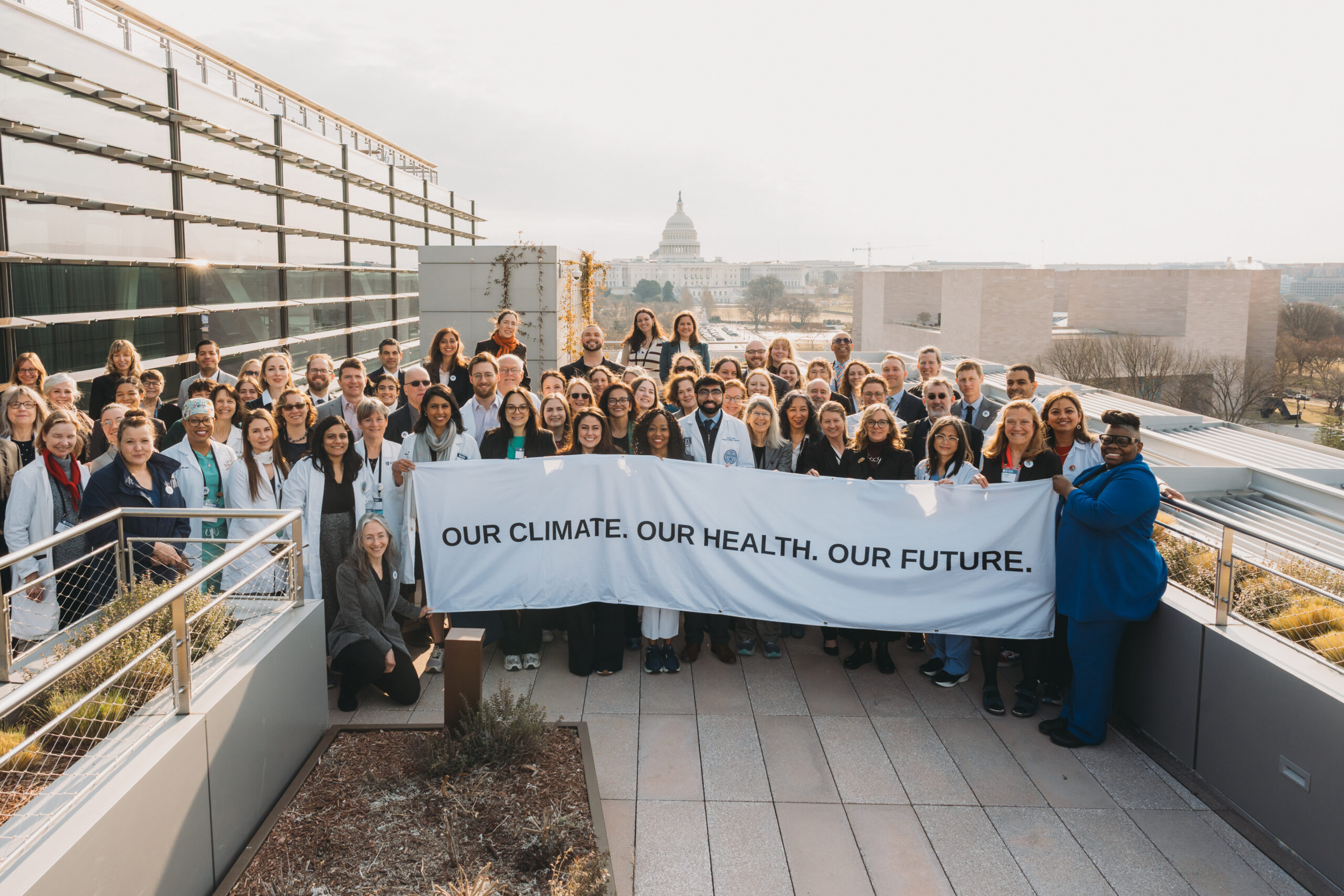As featured by the City of Phoenix:
The City of Phoenix Street Transportation Department and Office of Sustainability announced during a virtual presentation and panel discussion on September 14, 2021 the results of the first year of its Cool Pavement Pilot Program. The program and analysis of the cool pavement process is being conducted in partnership with Arizona State University (ASU).
Year one of the study done by scientists at ASU's Global Institute of Sustainability and Innovation, Healthy Urban Environments, and the Urban Climate Research Center revealed that reflective pavement surface temperatures are considerably lower than traditional roadway pavement.
Cool pavement coating reflects a higher portion of the sunlight that hits it, hence absorbing less heat. Because of this higher reflection, the coating has the potential to offset rising nighttime temperatures in the region.
Findings from year one of the study include:
- Cool pavement revealed lower surface temperatures at all times of the day versus traditional asphalt.
- Cool pavement had an average surface temperature 10.5 to 12 degrees Fahrenheit lower than traditional asphalt at noon and during the afternoon hours. Surface temperatures at sunrise averaged 2.4 degrees Fahrenheit lower.
- Sub-surface temperatures averaged 4.8 degrees Fahrenheit lower in areas treated with cool pavement.
- Nighttime air temperature at six feet of height was on average 0.5 degrees Fahrenheit lower over cool pavement than on the non-treated surfaces.
- The human experience of heat exposure at noon and the afternoon hours was 5.5 degrees Fahrenheit higher due to surface reflectivity, but similar to walking on a typical concrete sidewalk.
- Surface solar reflectivity declined over 10 months from a range of 33 to 38 percent to a range of 19 to 30 percent across all eight neighborhoods. Untreated asphalt has a reflectivity of only 12 percent.
This article was originally posted by the City of Phoenix. Read the full article here.





